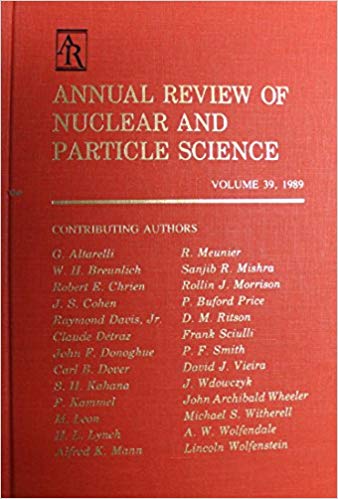质量极低的暗物质候选者
IF 8.4
2区 物理与天体物理
Q1 PHYSICS, NUCLEAR
Annual Review of Nuclear and Particle Science
Pub Date : 2024-07-10
DOI:10.1146/annurev-nucl-101918-023542
引用次数: 0
摘要
我们回顾了出现在传统弱相互作用大质量粒子(m χ ≲ 10 GeV)以下窗口的质量极低的暗物质(DM)候选体,它们的质量一直延伸到 m χ ≳ 1 meV,略低于暗物质变成波状的质量极限。这些候选者是由隐藏扇区(如隐谷)激发的,它们具有隐藏的作用力和丰富的动力学特征,但由于与标准模型(SM)的耦合相对较弱而躲避了传统加速器对新物理的搜索。我们仍然可以通过专用的低能对撞机来探测这些扇区,因为低能对撞机的高强度光束可以对较小的耦合产生敏感性;或者通过对DM光环和恒星结构演化的天体物理观测来探测这些扇区,因为宇宙的各个纪元可以对较小的DM相互作用产生敏感性。我们还考虑了DM丰度通过与SM的相互作用而固定下来的机制,这直接促使我们在地面实验中寻找轻DM。这篇综述的大部分内容是关于通过核反冲、电子激发或声子和磁子等集体模式直接探测这种低质量候选DM的新想法。本文对凝聚态物质中丰富的材料和模式进行了综述,并对具体的探测前景进行了展望。本文章由计算机程序翻译,如有差异,请以英文原文为准。
Dark Matter Candidates of a Very Low Mass
We review dark matter (DM) candidates of a very low mass appearing in the window below the traditional weakly interacting massive particle (m χ ≲ 10 GeV) and extending down to m χ ≳ 1 meV, somewhat below the mass limit at which DM becomes wavelike. Such candidates are motivated by hidden sectors such as hidden valleys, which feature hidden forces and rich dynamics, but have evaded traditional accelerator searches for New Physics because of their relatively weak coupling to the Standard Model (SM). Such sectors can still be detected through dedicated low-energy colliders, which, through their intense beams, can have sensitivity to smaller couplings, or through astrophysical observations of the evolution of DM halos and stellar structures, which, through the Universe's epochs, can be sensitive to small DM interactions. We also consider mechanisms whereby the DM abundance is fixed through the interaction with the SM, which directly motivates the search for light DM in terrestrial experiments. The bulk of this review is dedicated to the new ideas that have been proposed for direct detection of such DM candidates of a low mass through nuclear recoils, electronic excitations, or collective modes such as phonons and magnons. The rich tapestry of materials and modes in the condensed matter landscape is reviewed along with specific prospects for detection.
求助全文
通过发布文献求助,成功后即可免费获取论文全文。
去求助
来源期刊
CiteScore
21.50
自引率
0.80%
发文量
18
期刊介绍:
The Annual Review of Nuclear and Particle Science is a publication that has been available since 1952. It focuses on various aspects of nuclear and particle science, including both theoretical and experimental developments. The journal covers topics such as nuclear structure, heavy ion interactions, oscillations observed in solar and atmospheric neutrinos, the physics of heavy quarks, the impact of particle and nuclear physics on astroparticle physics, and recent advancements in accelerator design and instrumentation.
One significant recent change in the journal is the conversion of its current volume from gated to open access. This conversion was made possible through Annual Reviews' Subscribe to Open program. As a result, all articles published in the current volume are now freely available to the public under a CC BY license. This change allows for greater accessibility and dissemination of research in the field of nuclear and particle science.

 求助内容:
求助内容: 应助结果提醒方式:
应助结果提醒方式:


